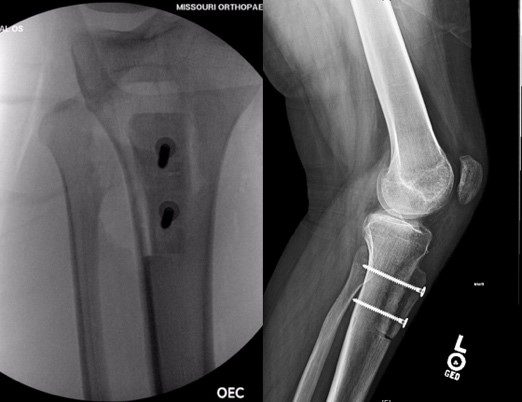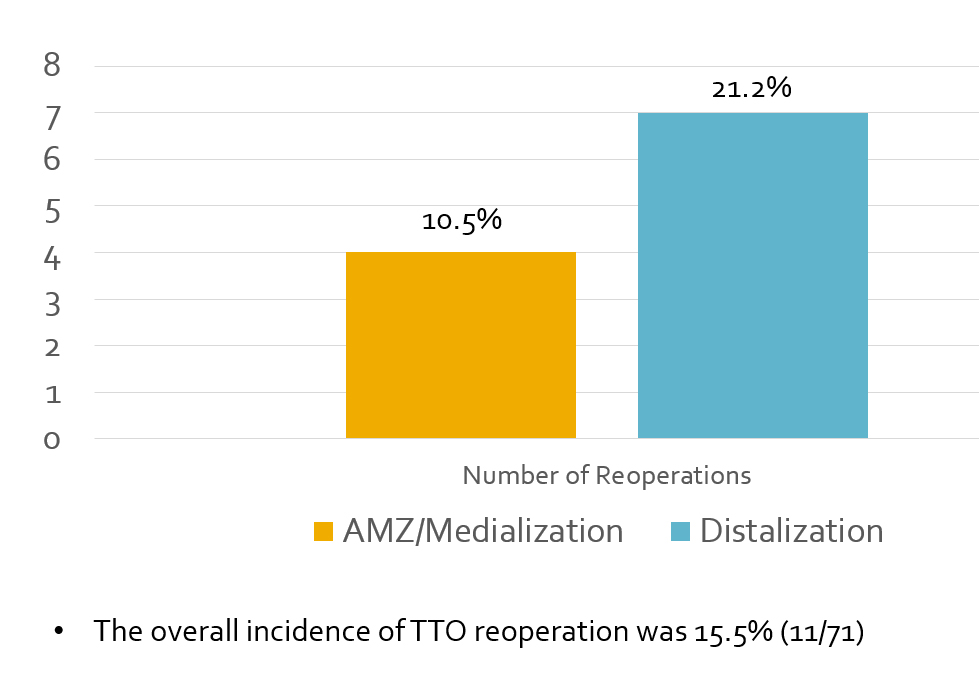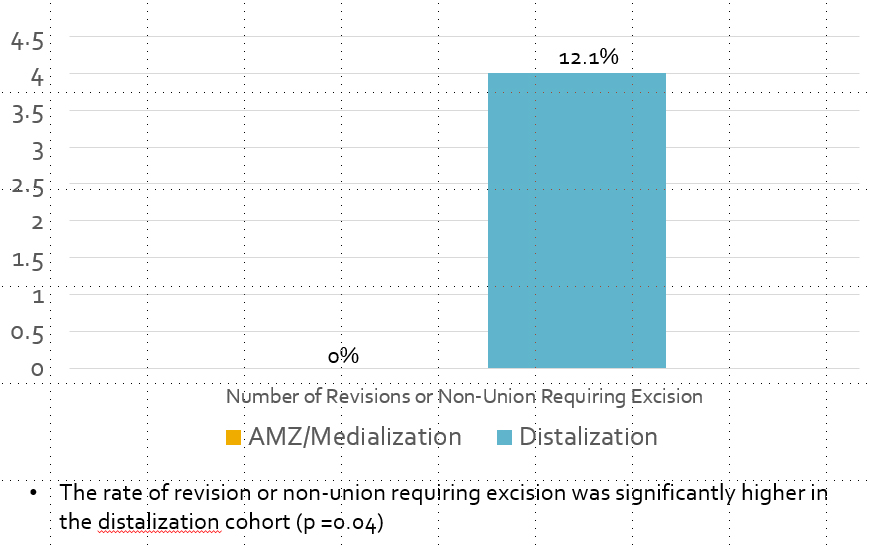BLOG: Tibial tubercle osteotomy that includes distalization has higher reoperation and revision rates

Tibial tubercle osteotomy is a surgical procedure that can correct patellofemoral malalignment in the setting of symptomatic instability and/or chondrosis. Medialization or anteromedialization-type tibial tubercle osteotomy maintains a distal cortical hinge and is used to correct a lateralized force vector (ie, tibial tubercle-trochlear groove distance greater than 20 mm) or to unload chondral lesions. Distalization-type tibial tubercle osteotomy requires disruption of the distal cortical hinge and is used to correct patella alta (ie, Caton Deschamps >1.3) in the setting of refractory patella instability (Figure 1).


There is a paucity of information comparing the complication profile of the different tibial tubercle osteotomy (TTO) techniques. The purpose of this study was to assess reoperation and revision rates in cohorts of patients undergoing TTO with either anteromedialization (AMZ) or distalization (DTZ).
This was a retrospective review of prospectively collected data from a consecutive cohort undergoing TTO by a single surgeon during a 5-year period. Based on the above indications, patients were separated into AMZ or DTZ groups. The primary endpoints were reoperation for infection, wound complications or post-surgical stiffness, or failure of fixation (eg, fracture, non-union) requiring revision surgery. Other complications were recorded including thromboembolic events and painful hardware requiring removal. Results were analyzed statistically.
In this series of 71 total TTOs, the overall incidence of TTO reoperation was 15.5%. The reoperation rate of DTZ was more than twice that of the AMZ group (21.2% vs. 10.5%; Figure 2). DTZ had a significantly higher rate of failure of fixation (fracture, non-union) requiring revision TTO or tubercle fragment excision as compared to AMZ (N=4 vs. N=0; Figure 3). There was no difference in thromboembolic events or reoperation for infection, stiffness, or painful hardware between AMZ and DTZ groups.

Figure 2: The overall reoperation rates after AMZ vs. DTZ are shown.
In a 2014 systematic review, Magnussen et al. found only five publications addressing outcomes of DTZ for patellofemoral instability. Complications (tibial tubercle nonunion, proximal tibia fracture, infection) but not revision rates were reported. Similarly, multiple case series on AMZ have reported on complications with heterogenous results from mixed patient populations. Differences in reoperation and revision rate between AMZ and DTZ are likely multifactorial. Violation of the cortical hinge leads to loss of mechanical stability and disruption of periosteal blood supply. Increased stress at the osteotomy site likely contributes to an increased rate of fixation failure in this cohort.

Overall, our data and others suggest TTO is a relatively safe procedure with a generally low complication profile. However, the increased rate of reoperation and revision in the DTZ cohort is concerning. Surgeons should use this information to refine surgical indications and to better inform patients regarding expectations and outcomes. This data may also be used to individualize rehabilitation protocols based on the type of TTO performed.
Authors’ note: This work was presented as an abstract at the 2017 International Patellofemoral Study Group Meeting in Munich.
Seth L. Sherman, MD, is an associate professor in the department of orthopedic surgery at Sports Medicine and Cartilage Restoration, and co-division director of Sports Medicine at Missouri Orthopedic Institute, University of Missouri-Columbia.
Contributors: Andrew Garrone, BS; Zach Hanson, BS; Elliott Voss, BS; and Betina Hinckel, MD
Disclosures:
Sherman reports he is a board or committee member for the ACL Study Group; is on the editorial or governing board for the American Journal of Orthopedics; is a board or committee member for the American Orthopaedic Society for Sports Medicine; is a paid consultant for and receives research support from Arthrex Inc.; is on the editorial or governing board for Arthroscopy; is a board or committee member for Arthroscopy Association of North America; is a paid consultant for Ceterix Orthopaedics, CONMED Linvatec, Moximed, Neotis, Regeneration Technologies Inc. and Vericel; and receives research support from Zimmer. Garrone, Hanson, Voss and Hinckel report no relevant financial disclosures.
References:
Magnussen RA, et al. Knee Surg Sports Traumatol Arthrosc. 2014;doi:10.1007/s00167-013-2445-8.
Sherman SL, et al. Am J Sports Med. 2014;doi:10.1177/0363546513507423.
Tompkins M, Arendt EA. Sports Med Arthrosc Rev. 2012;doi:10.1097/JSA.0b013e31825c74cf.
